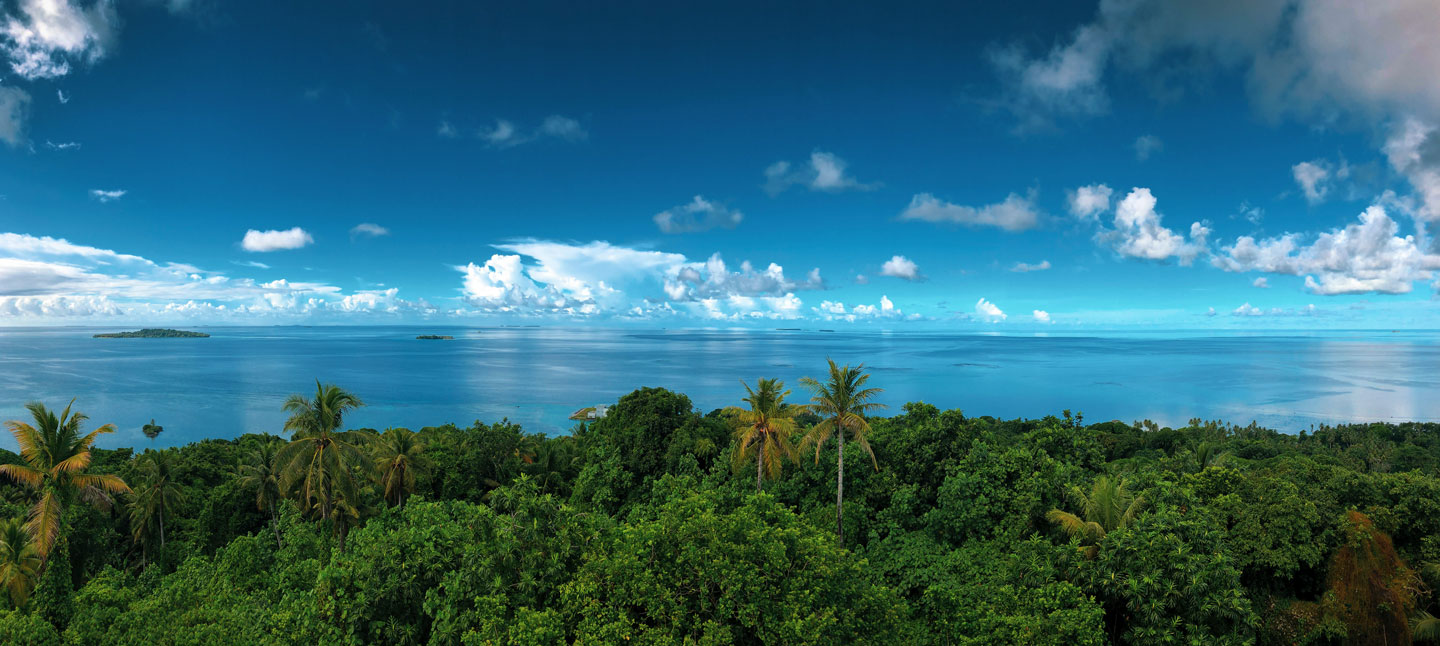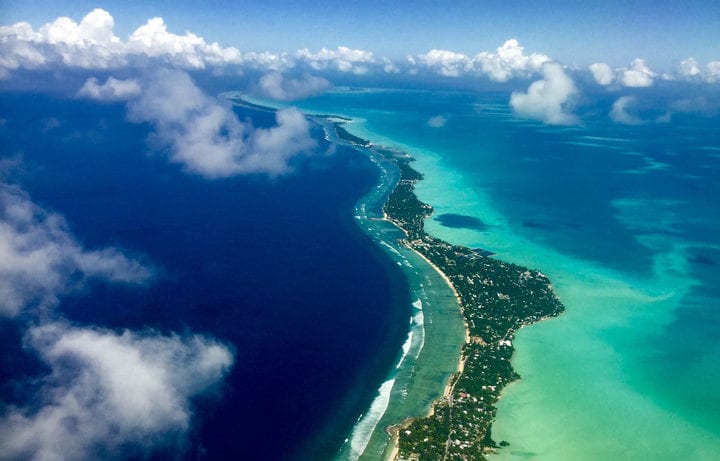Kiribati is an island group in the Pacific Ocean part of Micronesia, comprising about 33 islands with a total population of 112,000. Despite its difficult colonial history and assimilation, almost 99% of the locals are indigenous i-Kiribati still speaking Gilbertese language, a relative of Austronesian culture.
Most of the islands of Kiribati are coral atolls, which means they are an island group in the shape of a ring, sitting on top of coral reefs. In the middle of the ring is a lagoon, which makes the island group of stunning beauty and a unique natural phenomenon. Jam packed with rare species of plants, birds and fishes, Kiribati is a very popular destination for animal watchers and wild life photographers from all over the world. At the same time, it is subject to many threats caused by climate change and rising sea levels. On some of the islands, the sea levels have already come so close, you can see the sea on both sides if you stand in the middle. This is how Kiribati is slowly stretched thin.
Being a community of intense inter island exchange of food and ceremony, many of the local people have already left parts of their native grounds to seek refuge within the administrative centre, a chain of islands within Kiribati called Tarawa. But Tarawa is becoming very crammed, so says Erieta Aram in an interview with The Guardian. Families living on the coastline of Tarawa are forced inwards, infringing on one another. The inherent scarcity of land and the frequent visits of cyclones are making it increasingly difficult for the people in one of the poorest countries in the world to maintain their lifestyles. Many are depending on canned, pre-cooked and imported (expensive) food as the changing climate is challenging the seasonal reaping and sowing of traditional crops, like taro and betel nut. And as there’s no record of mammals inhabiting the islands, most are currently relying on subsistence fishing. But possibly the biggest cause for concern is the sallification caused by drought, making fresh drinking water more and more difficult to come by in the near future.
Kiribati and its people is not the only country faced with such issues. Many islands, of which most are located in the Pacific, are in danger of being submerged by the rising tides of the ocean. In some places the sea level is rising by 1.2cm a year, four times faster than the global average. In 2009, the Maldives were the first to raise the possibility of purchasing land in another country to provide refuge for their people. Now Kiribati is taking action to do just that.”Kiribati is the first on a list which could get longer as time passes,” says Ronald Jumeau, Seychelles ambassador at the United Nations, who took part in the 2015 international negotiations on climate change in Bonn.
In 2015, Kiribati’s president Anote Tong finalized the purchase of 20 square kilometres within the island group of Fiji, 2000 km away from the homeland of his people. Being one the poorest countries underneath sea level, it would be a financial catastrophe to protect Kiribati from rising tides for much longer, which makes the purchase of dire necessity. Therefor, the acquired stretch of land is currently used for agriculture and fishing, to ensure the nation’s food security. Eventhough most people in Kiribati are opposed the idea of eventually having to seek refuge on Fiji, they also seem to be aware that the impacts of climate change are irreparable and will only get worse.
Specialist on human migration at the University of Versailles- Saint Quentin in France, François Gemenne, said:
“Among the small islands, Kiribati is the country that has done most to anticipate its population’s future needs (2015). The government has launched the ‘migration with dignity’ policy… The aim is to avoid one day having to cope with a humanitarian evacuation.”
Cover photo by Noor Images


